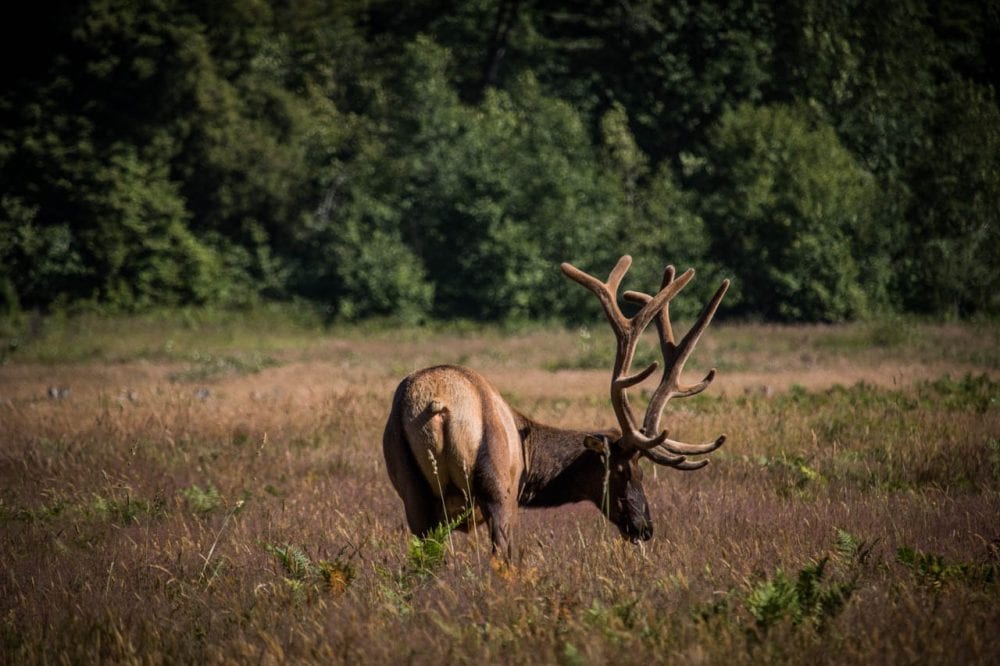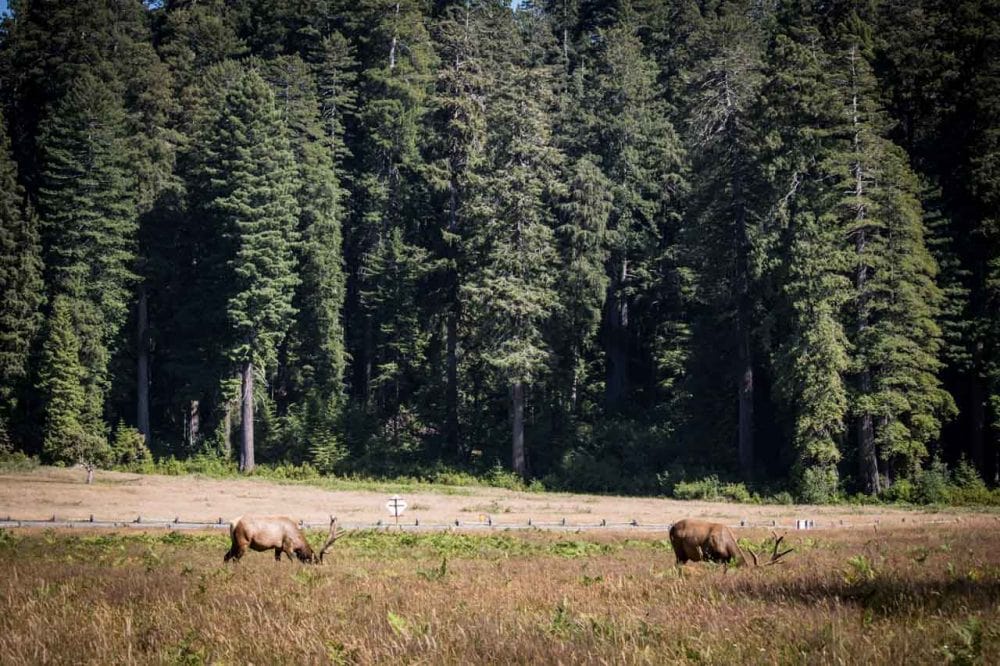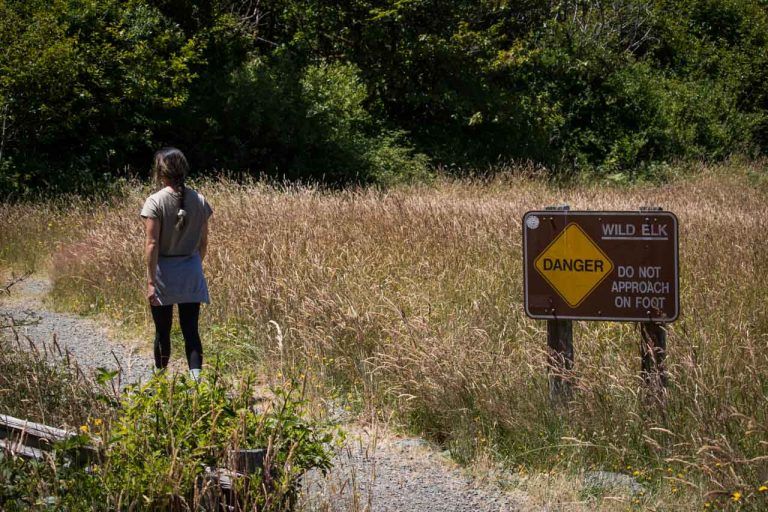What is THAT Sound?
Come fall, herds of elk gather in meadows for their annual breeding season, known as the rut. Bull elk, turbocharged with testosterone, spar with each other for control of and mating rights to harems of up to twenty cows.
These large bulls actively—and often aggressively—defend their territory from anything and anyone that dares come too close. This includes other bulls, but also careless people.

Elk Safety: How to Safely View, Photograph and Hike Near Wild Elk
In this post, I will provide useful information about how to stay safe while observing and recreating near elk. Follow the elk safety tips and guidelines below and your elk viewing experience will be a safe and successful one.
Elk or Wapiti
Also known as wapiti, elk are one of the largest species in the deer family. These large ungulates are among North America’s largest terrestrial mammals.
Even though they’re herbivores, that doesn’t mean they are always docile and harmless. Just like other famous large American herbivores—especially moose and bison—elk can occasionally be (surprisingly) aggressive or defensive.

There currently are four surviving subspecies of elk. The most well-known of those are the Roosevelt elk (which is the largest subspecies of elk) and Rocky Mountain elk, while the other two subspecies are tule elk and Manitoban elk.
Similar to the history of the American bison, elk were nearly hunted to extinction by 1900.
Combined efforts from conservation organizations, including the National Park Service, and hunting groups increased the population of elk in the United States again throughout the 20th century.
Nowadays, you can (still or once again) see elk in the wild in several U.S. national parks. In some of those, notably Great Smoky Mountains, Grand Canyon and even Rocky Mountain, they were reintroduced after going extinct.

Elk Safety Tips and Guidelines
Whether you’re viewing these majestic animals in the Great Smoky or Rocky Mountains, or in California’s redwood forests or Washington’s Olympic rain forests, it’s important to know what to do to keep yourself safe around elk.
Elk are larger than both black bears and grizzly bears and, even though they might seem calm and aloof, they can react quite quickly to certain situations.
There are two periods during the year when elk can be especially aggressive. This is when you should be more alert when hiking in elk country.
- Late spring/early summer: this is calving season; cow elk are extremely protective of their newborn calves.
- September/October: this is mating season; bull elk aggressively guard their harem from other bulls and other intruders, such as people.
The best way to stay safe among elk is to keep your distance. This applies to all wild animals, but some park visitors still seem to think that elk are always gentle and friendly.
There is plenty of footage to be found online that proves the opposite. This video from Yellowstone even shows bull elk ramming cars.
ELK ATTACKS MAN IN USA
Watch as an elk attacks a man in the Great Smoky Mountains National Park, USA. This nature...
How to Stay Safe Around Wild Elk
- Keep your distance.
- Stay at least 30 meters (100 feet) from all elk. In some parks, this mandatory minimum distance is 50 meters (150 feet). Check each park’s website for specific information.
- Use binoculars and/or a telephoto lens to safely observe elk in the wild.
- If you enter an area with an aggressive or agitated elk, back away slowly.
- It is illegal to approach or feed wild animals in national parks. This, of course, applies to elk, too.
- If you see an elk calf, never touch it. Its mother is probably pretty close.
- A rule of thumb is: if a wild animal reacts to your presence, you are too close.
- Signs that an elk is nervous or on edge include grinding its teeth, sending its ears backward, curling its lips and raising the hair on its rump. Other indications that you’re too close are charging, kicking, stopping feeding and circling around you. Back away!
- Be extra vigilant and careful during the spring calving and fall mating seasons.

What to Do If You Get Charged by an Elk
If you do get charged or chased by an elk, it’s totally okay to run away. In fact, fleeing should be your first reaction.
Run to the nearest solid object, whether it’s a car or tree. Hide behind it. If you can, climbing a tree is good option as well.
Remember that the elk is just trying to scare you away. It does not actually want to attack you. Also remember that it was you who bothered the elk—not the other way around.
In case you get knocked down by a charging elk, stay down and curl up into a ball. Cover your neck and head with your arms. Stay still until the elk has left, then slowly get up, assess the area and quietly leave.
Staying safe while recreating or hiking in elk country is not difficult. These rules and guidelines are all pretty straightforward, easy to remember and even easier to follow.
~The National Parks Experience
Selling Your Home?
Get your home's value - our custom reports include accurate and up to date information.





